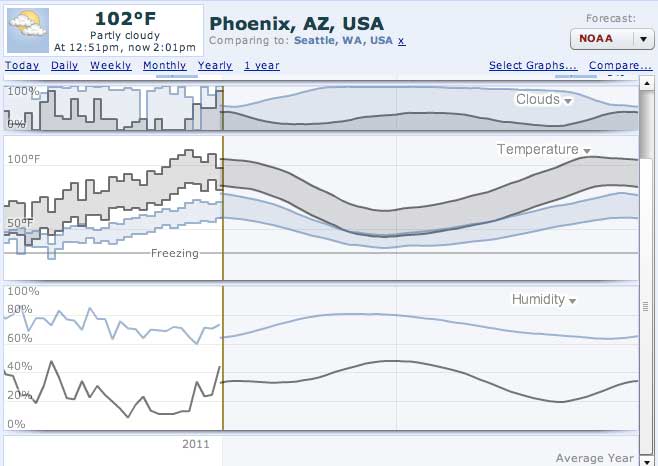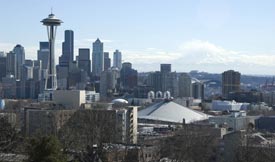After my recent glowing posts, many people have inquired why I’m feeling better. I’d like to give you a clear, definitive answer, but migraine is never that simple. There are a number of factors, from climate and medication to exercise, meditation and forgiving myself for being sick. I’ll talk about the first two today and the others, which have probably had a greater impact on my health and suffering than medication, later this week.
Climate
Moving to Phoenix, away from the clouds and rain of Seattle and the ever-changing weather of Boston, has had the biggest influence on my migraine frequency, duration and severity. Storms and clouds have been rolling through Phoenix the last week and I’m on migraine day six. Though migraines aren’t always present when there’s weather, particularly if I’m on vacation, the correlation holds about 90% of the time. I wonder if the issue is barometric pressure changes, though Seattle’s barometric pressure is relatively steady, so parts of my hypothesis fail there.
Indomethacin
I began taking this nonsteroidal anti-inflammatory drug in June because the sand-in-my-eye symptom pointed to the slight possibility that I had an abnormal presentation of hemicrania continua. This rare headache disorder is completely responsive to indomethacin. Though my headache pain lessened, it did not cease, which means my diagnosis is still migraine. My doctor kept me on a daily dose of 225 mg of the medication, though he warned that it is not recommended for long-term use as it is hard on the stomach. I’m sticking with it for now because it is the only medication on which I’ve noticed a decrease in the frequency and severity of my migraines.
Discontinuing Wellbutrin and Lamictal
In 2005, I was prescribed Cymbalta, Wellbutrin and Lamictal for depression. I stayed on them far longer than I intended, especially considering that I was still majorly depressed while taking them. I finally went off of them this summer after determining that my dizziness, tremor, hot flashes, fatigue, cold hands and feet, mental fogginess, nausea, and increased pulse were not migraine symptoms, but medication side effects. I believe Wellbutrin was the culprit, but I wanted to stay off all three if I could. When my depression symptoms returned, I went back on Cymbalta. I’m happy to say that the depression is at bay and I’m not experiencing any other side effects.
Namenda
I’m in love with this medication, which is an Alzheimer’s treatment that is used off-label for migraine. I don’t know if it has had an effect on the migraine severity or duration, but it has cleared the mental blah that has plagued me as the migraines worsened. I credit Namenda with returning the mental wherewithal necessary for me to resume blogging and restoring my sense of intelligence. The feeling dumb aspect of migraine, which is not addressed frequently enough, has been one of my most limiting symptoms and has caused the greatest loss of my sense of identity and purpose. Did I mention that I love this drug?


 Yummy food, Rock Band, neighborhood walks, warm weather. Mild chronic daily headache levels and nothing more than moderate migraine symptoms. That’s what the last four days have been like for me. I’ve been so happy.
Yummy food, Rock Band, neighborhood walks, warm weather. Mild chronic daily headache levels and nothing more than moderate migraine symptoms. That’s what the last four days have been like for me. I’ve been so happy.